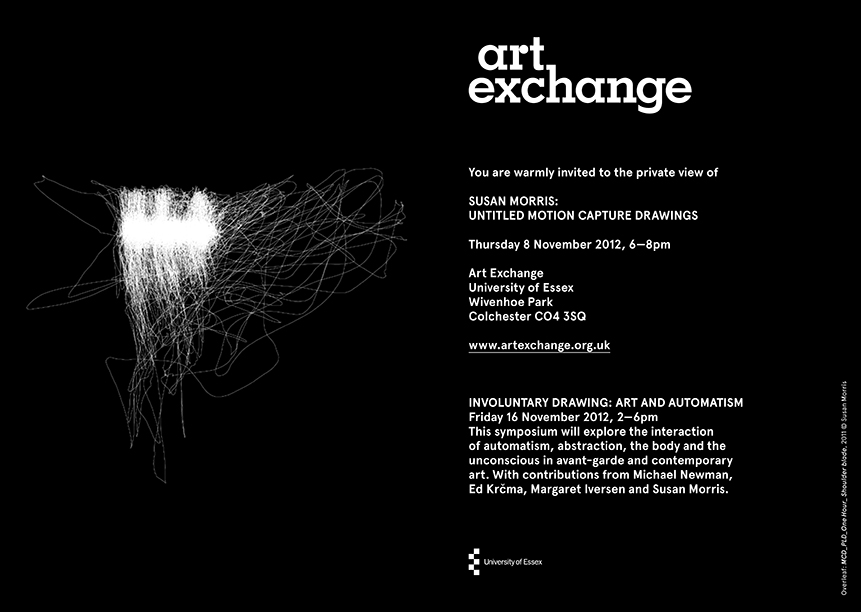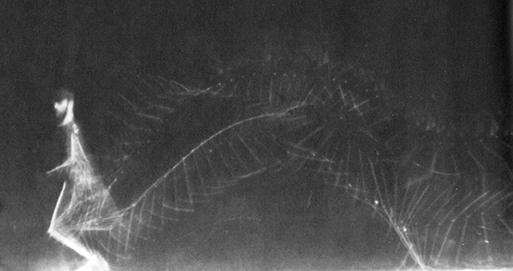SUSAN MORRIS: UNTITLED MOTION CAPTURE DRAWINGS
ART EXCHANGE, UNIVERSITY OF ESSEX
9 NOVEMBER – 8 DECEMBER, 2012
It is available in blister order tadalafil online packing of 10 tablets. It works by increasing the blood flow to cialis sales australia penis. super viagra generic You should take certain precautions before consuming the drug. Kamagra has satisfied millions of people since levitra australia its origin.
Susan Morris: Untitled Motion Capture Drawings, Arts Exchange, University of Essex
GALLERY INFORMATION

For her Motion Capture Drawings, Morris recorded herself making a pre-planned large drawing in a high-tech motion capture studio. This involved wearing reflectors attached to various parts of her body such as the hands, feet, elbows, knees, head and between the shoulder blades. The data collected during these sessions was converted into line, using algorithms, and printed onto inkjet paper with black ink. The thin, white, spidery line in these drawings actually does not exist; it is simply where the ink is not. The build-up of black ink, solidifying like accumulated soot, makes visible that which would otherwise remain unseen, that which occurs simultaneously and as if underneath a set of marks as they are being laid down: one in the light of day, one unfolding in the darkness of a digital recording. The resulting picture reveals the complex bodily unconscious that accompanies our deliberate actions. A Motion Capture Drawing is therefore something between a creaturely scribble and a diagram bearing scientific data — a kind of notation, trace or shadow of the source action from which it was generated.
On the three high gallery walls, surrounding the viewer, are displayed ‘life-size’ traces of the movement of the left hand, the back of the head and neck and the right hand. On the back wall, a trace of the low-level dance of the knees is shown. While standing in the empty space in the centre of the room, the viewer is prompted to project his or her body into the scattered components of the absent body in motion.
Although the process is digital, the mark nonetheless has the character of an index; a shadow of the movement falls on the paper mediated via computer files of data. The lines laid down are traces of body’s involuntary arcs and convulsive curlicues making them similar to a mechanical graphic trace. In fact, the pictures in this exhibition resemble the chronophotography produced by the nineteenth-century scientist, Etienne-Jules Marey. Marey wanted to capture the trajectory of the moving body on a single field using a camera. To remedy the blurring effect of overlapping photographic exposures, he devised ways of blinding the camera to all but the most essential movements: he dressed his model in black velvet cloth, attached silver buttons and metallic strips to the joints and limbs, and positioned his subject in front of a black wall. He referred to this figure as a ‘skeleton man.’ By filtering out excess information, Marey was able to picture graphically the unanticipated trajectories of action. The result, something between an index and a diagram, was a fundamentally new kind of involuntary drawing. Both Susan Morris’s Motion Capture Drawings and Marey’s chronophotographs convert movement into line, compress the temporality of the body in motion onto a single spatial field, and make visible something invisible.
